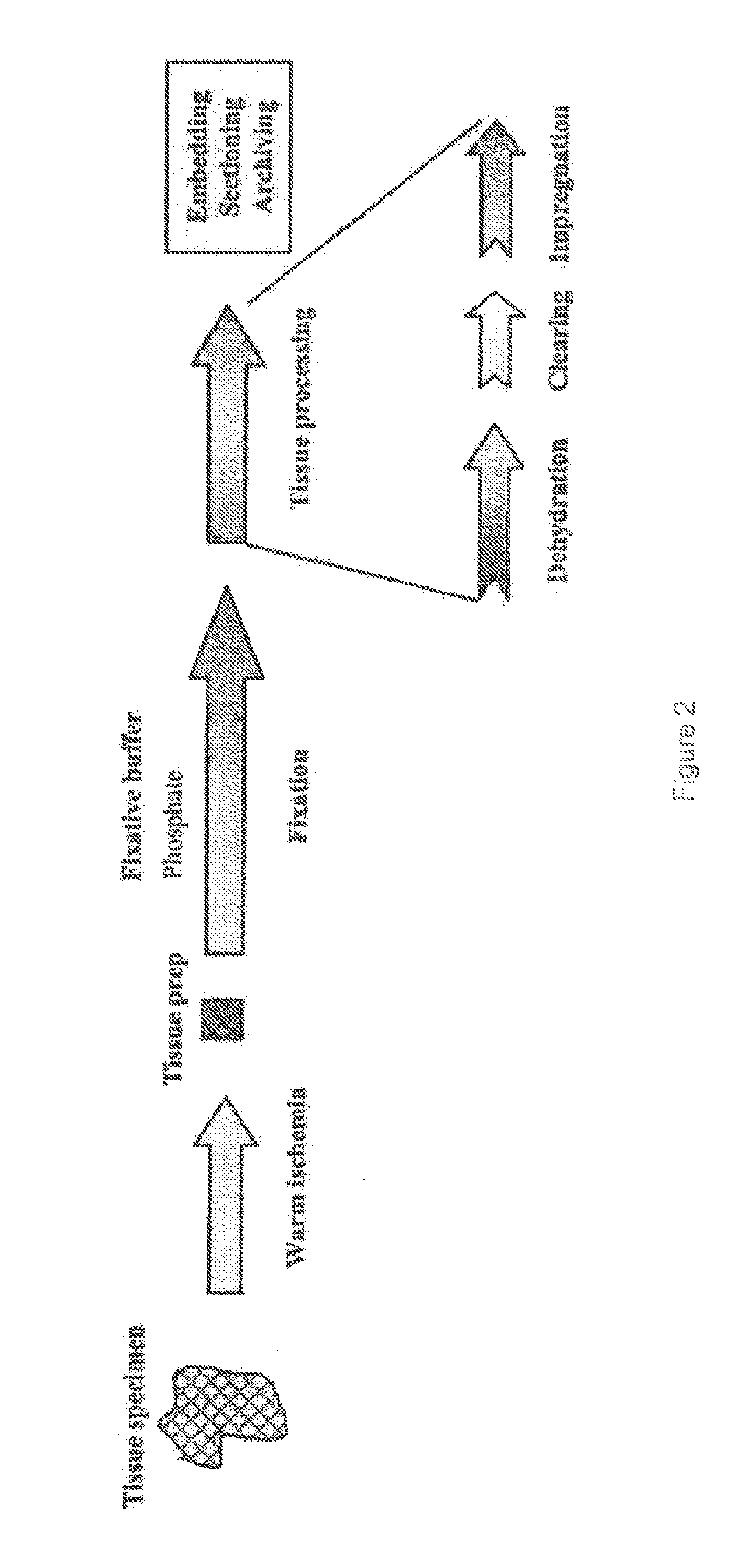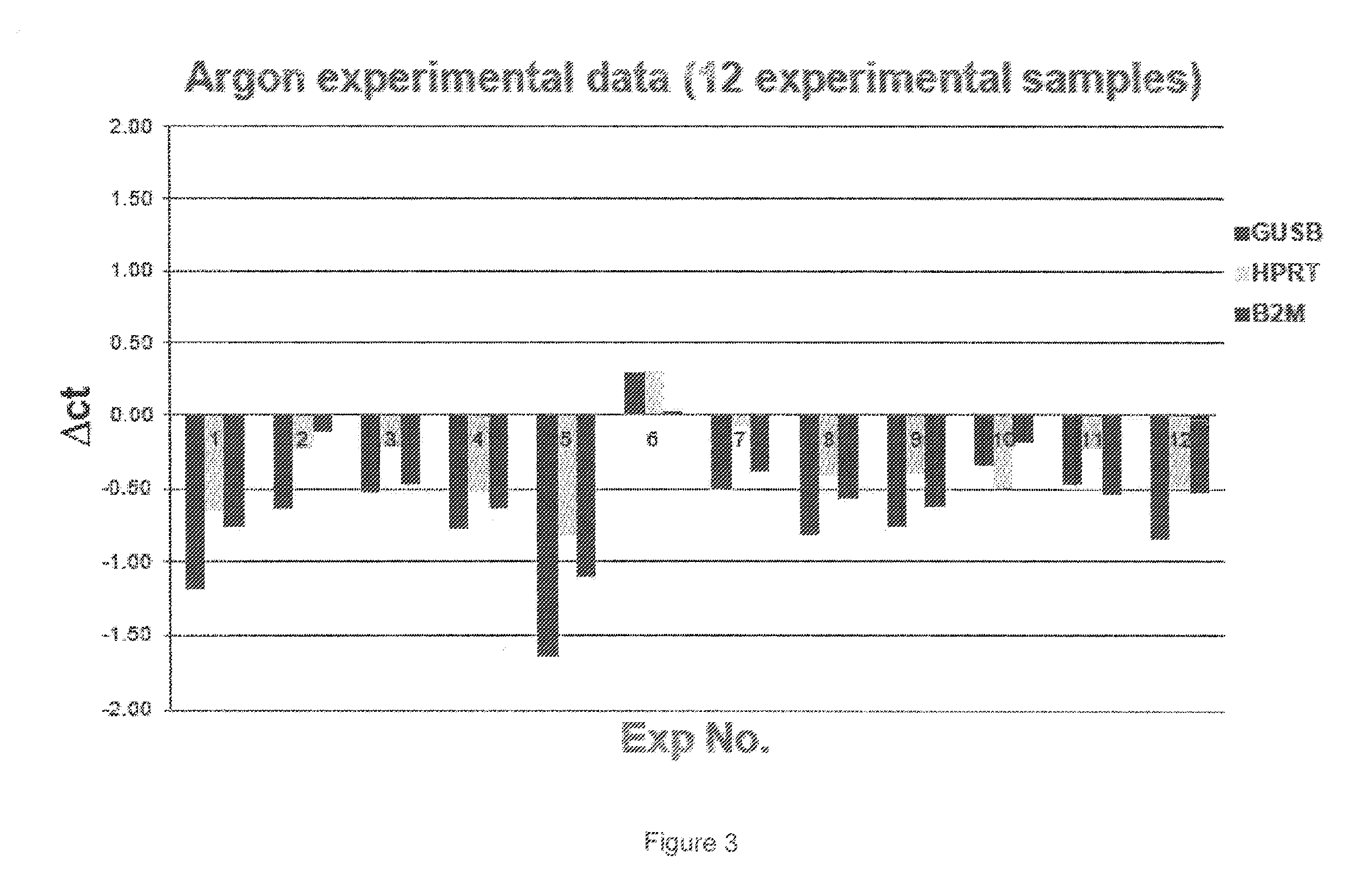Use of argon as a tissue fixation preservative
- Summary
- Abstract
- Description
- Claims
- Application Information
AI Technical Summary
Benefits of technology
Problems solved by technology
Method used
Image
Examples
Embodiment Construction
[0038]RNA is extracted from paraffin emended tissues using established procedures. (Okello J B., et al., 2010; Abramovitz M, et al, 2008).
[0039]RNA integrity is characterized by quantitative reverse transcriptase polymerase chain reaction (qRT-PCR) using fluorescently labeled nucleotides (Fleige S and Pfaffl M W, 2006). The comparative results are expressed as the number of PCR amplification cycles required to produce a discernible fluorescent amplification product signal. (Abramovitz M, et al, 2008; von Ahlfen S., et al, 2007). Comparisons are in terms of ctexperimental−ctcontrol=Δct. A negative Δct thus represents an improvement in RNA quality. Due to the nature of PCR, the Δct values form a logarithmic scale axis when charted.
[0040]The qRT-PCR targets were the mRNAs for highly expressed liver “housekeeping” genes:
TABLE 1Housekeeping Genes for ct AnalysisAmpliconGeneNameSpeciesCompanyCatalog#lengthDetailsGUSBglucuronidase, betaMouseInvitrogenMm00446956_m188The assay probespans an ...
PUM
| Property | Measurement | Unit |
|---|---|---|
| Temperature | aaaaa | aaaaa |
| Fraction | aaaaa | aaaaa |
| Percent by volume | aaaaa | aaaaa |
Abstract
Description
Claims
Application Information
 Login to View More
Login to View More - R&D
- Intellectual Property
- Life Sciences
- Materials
- Tech Scout
- Unparalleled Data Quality
- Higher Quality Content
- 60% Fewer Hallucinations
Browse by: Latest US Patents, China's latest patents, Technical Efficacy Thesaurus, Application Domain, Technology Topic, Popular Technical Reports.
© 2025 PatSnap. All rights reserved.Legal|Privacy policy|Modern Slavery Act Transparency Statement|Sitemap|About US| Contact US: help@patsnap.com



